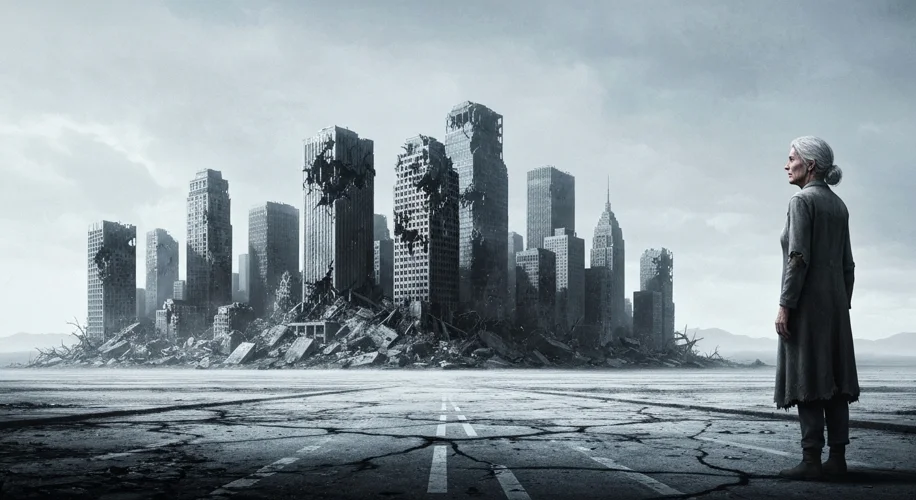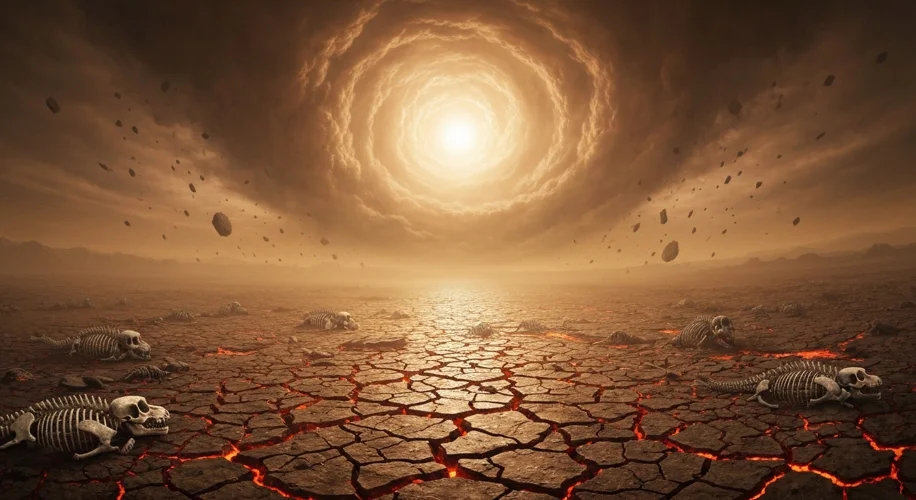Imagine a world suffocating, not from smog, but from its own internal inferno. Picture the air so thick with heat and poison that even the hardiest creatures gasp their last breath. This wasn’t a scene from a dystopian novel; this was Earth, approximately 252 million years ago, during an event so cataclysmic it permanently reshaped the planet’s tapestry of life. Known as the Permian-Triassic extinction, or more ominously, the ‘Great Dying,’ this event wiped out an estimated 96% of all marine species and 70% of terrestrial vertebrate species.
For eons, life had slowly, painstakingly evolved. The Permian period saw the rise of diverse ecosystems, with sprawling forests and mighty reptilian beasts roaming the land, while the oceans teemed with an incredible array of marine life, from shelled invertebrates to early fish. But lurking beneath the Earth’s crust, a monumental geological upheaval was brewing. The culprit? The Siberian Traps, a vast region in modern-day Russia, became the stage for the largest volcanic eruption in Earth’s history.

Over hundreds of thousands of years, colossal outpourings of lava, far exceeding anything seen in recorded human history, poured across Siberia. This wasn’t just a spectacular display of nature’s fury; it was a global poisoning. The volcanic activity released unimaginable quantities of greenhouse gases, primarily carbon dioxide and methane, into the atmosphere. The immediate effect was a runaway greenhouse effect, plunging the planet into a prolonged and brutal heatwave. Global temperatures soared, possibly by as much as 8 to 11 degrees Celsius (14 to 20 degrees Fahrenheit). This wasn’t just a warm summer; this was a planetary oven.
The consequences for life were devastating. Marine ecosystems, dependent on stable temperatures and dissolved oxygen, were hit the hardest. The warming oceans could hold less oxygen, leading to widespread anoxia (a lack of oxygen) in the water. Organisms like corals, plankton, and trilobites, which formed the base of many marine food webs, perished in droves. Those that survived faced the crushing reality of a planet fundamentally altered.
On land, the heatwave proved equally merciless. Forests withered and died, leading to widespread habitat loss and starvation for herbivores and the carnivores that preyed on them. Acid rain, another byproduct of the volcanic emissions, further damaged vegetation and poisoned freshwater sources. Many species simply couldn’t adapt quickly enough to the radical and rapid environmental shifts. Think of the massive, lumbering pareiasaurs or the predatory gorgonopsians; even these formidable creatures succumbed to the relentless environmental assault.

The extinction event wasn’t a single, instantaneous cataclysm but a prolonged period of environmental stress. The interconnectedness of Earth’s systems meant that the volcanic onslaught triggered a cascade of disasters: global warming, ocean acidification, ozone layer depletion, and widespread anoxia. Life had to endure not just one blow, but a relentless barrage of environmental insults.
While the ‘Great Dying’ sounds like an endpoint, it was also a beginning. The world that emerged from this fiery crucible was a starkly different place. The Permian’s dominant creatures were gone, making way for new forms of life. This mass extinction event cleared the ecological slate, paving the way for the rise of the dinosaurs in the subsequent Triassic period. The very creatures that would dominate the planet for the next 165 million years owed their evolutionary opportunity to the catastrophic end of their predecessors.
Studying the Permian-Triassic extinction offers profound insights into the fragility of life and the interconnectedness of Earth’s systems. It serves as a stark reminder of how geological processes, amplified by volcanic activity, can unleash devastating consequences. The planet healed, life rebounded, and new evolutionary paths were forged. But the scars of the ‘Great Dying,’ the ultimate heatwave, remain etched in the fossil record, a testament to a time when Earth nearly lost its breath, and life, as it was known, perished.

